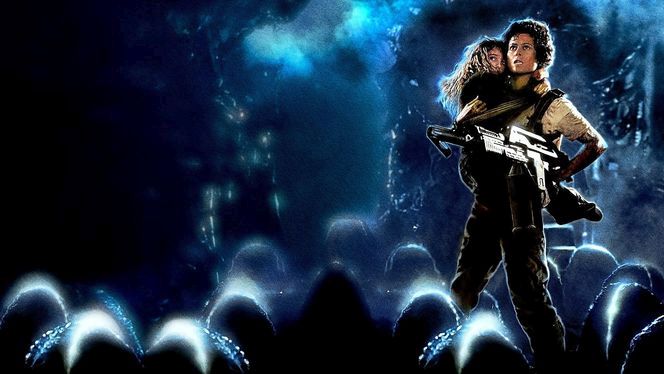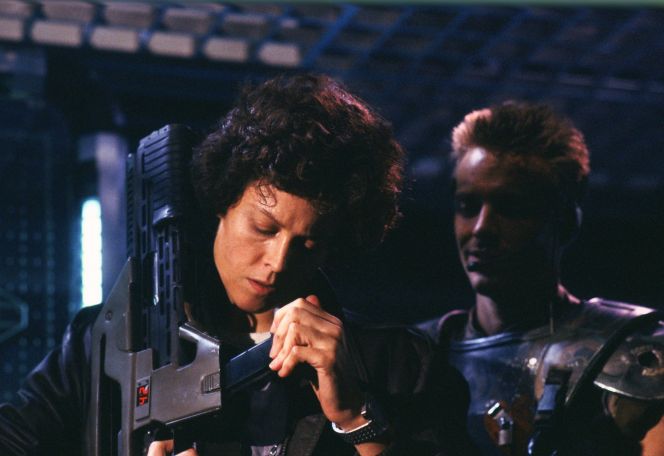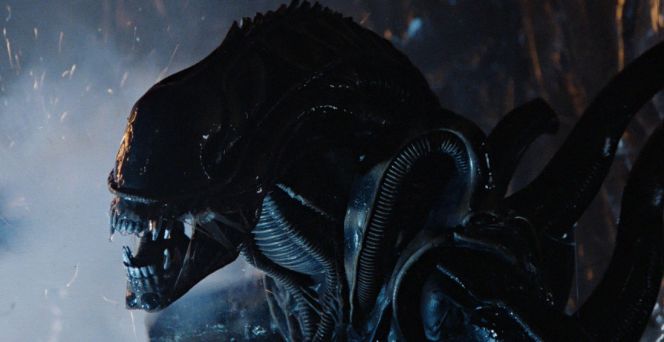RETRO MOVIE REVIEW – Sigourney Weaver became a Hollywood legend when she first took on the role of the fearless Ellen Ripley in Ridley Scott’s groundbreaking 1979 sci-fi horror film Alien. This intense, visually stunning movie tells the story of a spaceship crew terrorized by a lethal alien creature that wreaks havoc on board, killing anyone in its path. Today, Alien is regarded as one of the greatest achievements in cinema, sparking a successful, long-lasting franchise that continues to influence audiences.
However, the journey to producing sequels almost never happened when 20th Century Fox found itself embroiled in a highly publicized legal dispute with Brandywine Productions over the profits from Alien. The studio essentially had to be forced into approving the much-anticipated sequel. With this in mind, let’s dive deeper into the complex history of the Alien franchise to understand how the follow-up masterpiece finally came to life.
A Cinematic Triumph
When Alien was released, it dazzled both critics and audiences with its incredible creature effects and stunning visuals, earning the film an Oscar for Best Visual Effects. As one of the most significant films of the ’70s, Alien received numerous other awards, including three Saturn Awards (including Best Science Fiction Film), the Hugo Award for Best Dramatic Presentation, and a BAFTA Award for Best Film Music, while grossing over $184 million on a modest $11 million budget.
Though initially receiving mixed reviews, Alien has since been recognized as one of the most influential sci-fi and horror films ever made. It launched a franchise that includes several sequels, prequels, and crossovers. The film’s box office success also solidified Sigourney Weaver’s status as a leading actress, laying the foundation for her celebrated career. More than forty years after its 1979 debut, Alien continues to captivate audiences with its thrilling action, tight pacing, and vivid visuals. The titular creature has become one of the most iconic monsters in film history.
The influence of Alien on both cinema and pop culture is immense. Its eerie atmosphere, cutting-edge visuals, terrifying monster, and masterful blend of sci-fi and horror have made it a genre-defining film. The Alien franchise has grossed over $1.3 billion worldwide and continues to deliver thrills and chills. As Syfy’s retrospective puts it, the film is “a groundbreaking science fiction classic” and “a movie so influential that it’s hard to imagine a time before Alien.”
Brandywine Productions vs. 20th Century Fox
Despite winning an Oscar, dominating the box office, and boosting the careers of Sigourney Weaver and Ridley Scott, 20th Century Fox was hesitant to greenlight a sequel to Alien. When discussions about a follow-up began after the 1979 film’s impressive debut, the studio employed questionable tactics to block financing for the sequel.
As mentioned earlier, Alien grossed $184.7 million during its theatrical run (including its re-release) and broke 51 box office records during its opening weekend, earning $3,527,881 over four days. Fans lined up outside Grauman’s Egyptian Theatre to see the film, despite it never having an official premiere. Yet, despite Alien‘s impressive commercial success, 20th Century Fox claimed that in the 11 months since the film’s release, the studio had actually lost $2 million.
Using the tricks of Hollywood accounting, Fox attempted to conceal Alien‘s revenue to reduce the payments owed to Brandywine Productions, thereby preventing a potential sequel. After widespread outrage from industry accountants and demands for a profit recount, Fox quickly reversed its stance in August 1980, claiming that Alien had actually made a profit of $4 million (a figure that was again disputed). Brandywine filed a lawsuit against Fox for unpaid profits, and when Joe Wizan, who was open to the idea of a sequel, took over as head of the studio’s motion picture division, the lawsuit was ultimately settled in 1983, and Aliens was approved to help recover Brandywine’s losses.
James Cameron’s Chaotic Production
After the bitter legal battle between Brandywine Productions and 20th Century Fox, plans for a sequel officially kicked off by 1985. However, another challenge arose when Fox announced that they didn’t want Sigourney Weaver to return due to concerns over her potential salary demands. Aliens writer and director James Cameron and producer Gale Anne Hurd were determined to bring Weaver back, and after much negotiation and her initial refusal, she was finally secured with a $1 million salary and a share of the box office profits.
Once Weaver was confirmed as the lead, production began swiftly with a 75-day shooting schedule and an $18.5 million budget. Joining Weaver were Michael Biehn, Paul Reiser, and Bill Paxton. As with many of Cameron’s projects, the uncompromising director clashed with the British film crew and struggled to understand the country’s film industry traditions, such as hour-long tea breaks that interrupted production. Cameron fired first assistant director Derek Cracknell after his requests were ignored, and at one point, the Pinewood crew even staged a walkout in support of Cracknell.
Cameron’s relative inexperience at the time (he was 31 during the shoot), coupled with Cracknell’s dismissal, nearly led to a full-scale mutiny by the crew, prompting Cameron to hold a lengthy meeting where the cast and crew aired their grievances. Though they eventually returned to work and completed Aliens, Cameron and the crew never fully bonded, leading the Oscar-winning director to remark at the end of filming:
“This has been a long and difficult shoot, full of problems. But the one thing that kept me going was knowing that one day I’d drive out the gate of Pinewood and never come back, and you poor bastards would still be here.”
Aliens: A Landmark Success
Aliens survived numerous production delays, a major lawsuit, and even an on-set mutiny to finally hit theaters worldwide on July 18, 1986, seven years after the original film’s debut. The much-anticipated sequel, plagued by countless challenges, ultimately proved to be worth the effort, opening at number one at the box office and earning $10.1 million, exceeding Fox’s expectations and becoming a summer blockbuster. By the end of its theatrical run, the film grossed $85 million in North America and over $183 million globally.
The sequel also won over critics, who praised Weaver’s outstanding performance, as well as Aliens’ terrifying scenes, relentless action, and impressive visual effects. Weaver rightfully earned an Oscar nomination for her work. Many were stunned by the film’s intense blend of horror and action, but they were equally impressed by Cameron’s fearless storytelling and his ability to push cinematic boundaries. Aliens is hailed as one of the greatest sequels of all time and one of the most unforgettable films of the 1980s. Without Brandywine’s epic battle with Fox, Ellen Ripley’s thrilling story and legacy might have been unjustly cut short.
-Herpai Gergely “BadSector”-
Aliens
Direction - 9.2
Actors - 8.6
Story - 8.2
Visuals/Action/Music/Sound (1986) - 8.6
Ambience - 8.8
8.7
EXCELLENT
Aliens, or as it’s known in Hungary, A bolygó neve: Halál, stands out as an exceptional sequel that overcame legal battles and production challenges to achieve a triumphant release. James Cameron’s direction is tight, visually stunning, and intense, while Sigourney Weaver’s iconic performance elevates the film even further. Aliens builds on the cult legacy of its predecessor while taking sci-fi and horror to new heights.


















Leave a Reply